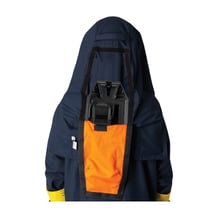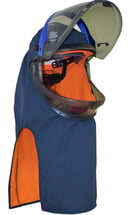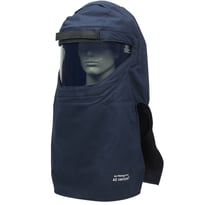- HOME
- PRODUCTS
- Arm Protection (119)
- Cold Stress (1)
- Critical Environment (170)
- Electrical Safety (133)
- Emergency Responder (37)
- Ergonomics (12)
- Eye Protection (356)
- First Aid (17)
- Hand Protection (1447)
- Head Protection (103)
- Hearing Protection (49)
- Heat Stress (37)
- Protective Clothing (454)
- Respiratory Safety (44)
- Warning Beacons (28)
- BRANDS
- CHANNELS
- Sales Tools
- NEWS, ARTICLES & EVENTS
- Log in or Sign Up
- PRODUCTS
- /// Hand Protection
- /// Hand Protection
- Chemical Resistant Gloves
- Cold Protection Gloves
- Cut Resistant Gloves
- Disposable Gloves
- Fabric Work Gloves
- General Purpose Gloves - Coated
- General Purpose Gloves - Uncoated
- Heat Protection Gloves
- High Performance Gloves
- Leather Drivers Gloves
- Leather Palm Gloves
- Parade & Uniform Gloves
- /// Head Protection
- /// Eye Protection
- /// Hearing Protection
- /// Respiratory Safety
- /// Protective Clothing
- /// Arm Protection
- /// Heat Stress
- /// Warning Beacons
- /// Cold Stress
- /// Ergonomics
- /// First Aid
- /// Welding Protection
- /// Controlled Environment
- /// Electrical Safety
- /// Emergency Responder
- /// Hand Protection
- BRANDS
- CHANNELS
- SALES TOOLS
ARC Flash Hoods: Close the Gap Between Comfort and Compliance

When working in high voltage environments, workers must protect themselves against ARC flash and flash fire hazards with PPE consistent with the NFPA 70E PPE set categories. This means equipping workers with the right gear that will protect their head, face, neck and all other parts of the body considering the severity of the electrical risk present. There are many common problems and complaints regarding ARC-rated head and face protection – specifically, poor visibility, face shield fogging, lack of airflow and heavy material composition, to name a few of the most cited complaints. All these discomforting factors can lead to decreased compliance, which results in an increased chance of worker injury, fatality, or at the very least, a decrease in overall efficiency and productivity. In this article, we’ll highlight the key things to consider when selecting ARC flash hoods and shields to address these issues.
CONSIDERATIONS TO TAKE WHEN CHOOSING ELECTRICAL PPE
Ventilated ARC Flash Hoods
 OSHA states that “bulky or non-breathable protective clothing and equipment is a factor that puts workers at a greater risk for heat-related illness and stress.” Traditional ARC flash hoods are often heavy, bulky and uncomfortable, making workers reluctant to wear them in and around electrical ARC boundaries and more susceptible to heat stress when they do. Ventilated hoods are designed to provide the ultimate level of comfort without sacrificing protection or compliance. Anti-fogging is another feature sought after by workers in the field. Choosing an ARC flash hood or shield with added ventilation and or anti-fogging lens properties can increase the chance of workers consistently donning ARC hoods and shields in and even around electrical ARC boundaries. The PIP® ultralight 40 Cal/cm2 ARC hood utilizes Hybrid Fabric Technology to increase garment durability in the field while decreasing the weight on the worker’s neck and shoulders by 37%. The ultralight garment uses a DuPont™ shell to provide its superior tensile strength, industrial wash resistance and long-term durability. The removable ventilating unit and power pack are protected by a compact and durable ABS case covered by a lightweight fabric while providing freshly ventilated air into the hood to cool down the worker. A hook and loop adjustment offers custom airflow at exhaust and intake.
OSHA states that “bulky or non-breathable protective clothing and equipment is a factor that puts workers at a greater risk for heat-related illness and stress.” Traditional ARC flash hoods are often heavy, bulky and uncomfortable, making workers reluctant to wear them in and around electrical ARC boundaries and more susceptible to heat stress when they do. Ventilated hoods are designed to provide the ultimate level of comfort without sacrificing protection or compliance. Anti-fogging is another feature sought after by workers in the field. Choosing an ARC flash hood or shield with added ventilation and or anti-fogging lens properties can increase the chance of workers consistently donning ARC hoods and shields in and even around electrical ARC boundaries. The PIP® ultralight 40 Cal/cm2 ARC hood utilizes Hybrid Fabric Technology to increase garment durability in the field while decreasing the weight on the worker’s neck and shoulders by 37%. The ultralight garment uses a DuPont™ shell to provide its superior tensile strength, industrial wash resistance and long-term durability. The removable ventilating unit and power pack are protected by a compact and durable ABS case covered by a lightweight fabric while providing freshly ventilated air into the hood to cool down the worker. A hook and loop adjustment offers custom airflow at exhaust and intake.
Lift Front ARC Flash Hoods

Lift Front ARC Flash Hoods address the problems and complaints of poor ventilation, lack of airflow and limited two-way communication. Poor ventilation and limited airflow can accelerate heat stress issues and impact workers' ability to catch their breath. If the worker is not present inside of the set electrical ARC boundary, they can lift the front of the face shield up easily to obtain fresh air when needed. This eliminates the need to remove the entire hood, providing a convenient solution for workers who are in need of fresh air. Workers can simply latch the shield to securely close the hood before returning to a hazardous work zone. When the shield is down and the wearer is working, the lift front hood has specially designed, built-in indirect vents at the front, sides and top to deliver more ventilation AND serve as auditory ports for improved 2-way communication, even when the face shield is secured.
Highly Transparent Fogless ARC Flash Face Shields
Highly transpar ent fogless ARC flash face shields allow workers to increase their safety and productivity at the same time. They create a greater range of visibility and light transmission. With this new technology, workers will no longer be tempted to raise their face shield visor to see better.
ent fogless ARC flash face shields allow workers to increase their safety and productivity at the same time. They create a greater range of visibility and light transmission. With this new technology, workers will no longer be tempted to raise their face shield visor to see better.
Historically, ARC flash face shields have always had a dark green tint to them. The dark green color is a result of the dye used to coat the face shield and protect users from infrared light and energy from an ARC flash. While such protection is obviously important, the color presents a few hazards of its own.
Color contrast is difficult to see through a dark green tint. Electrical workers often rely on their sense of color when identifying wires and other electrical components. Yellow and white are particularly difficult to distinguish through a green-tinted face shield. Traditional dark green-tinted face shields also reduce visibility in low-light work areas. This can be a problem in confined spaces and industrial settings.
New technology has been developed that absorbs dangerous infrared light without needing to use a green dye. This effectively resolves the poor visibility and color contrast issues listed above.
Do you have questions about this blog or are you interested in learning more about the products discussed?
Click HERE to contact your local PIP® Sales Representative today or drop us a comment below!
Construction Safety Week 2021: Trending Safety Solutions In Construction
According to OSHA, the continuously evolving construction industry accounts for one in five...Construction Safety Week 2023: Trending Safety Solutions In Construction
According to OSHA, the continuously evolving construction industry accounts for one in five...Winter is Coming… Are You Ready?
Like it or not, winter will be here before we all know it. And now is the best time to start...Proposition 65 | Privacy Policy | Contact Us | Full Site
© 2012-2025Protective Industrial Products, Inc. All rights reserved.








